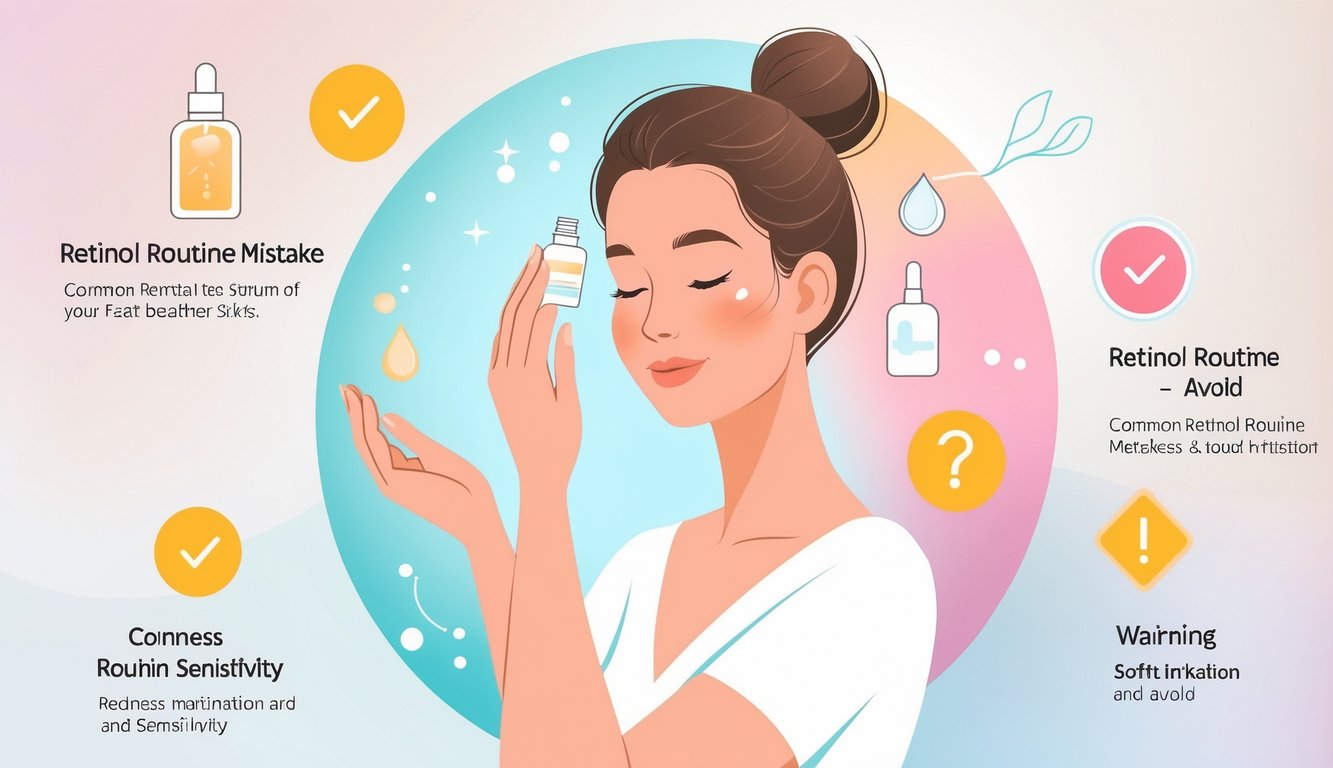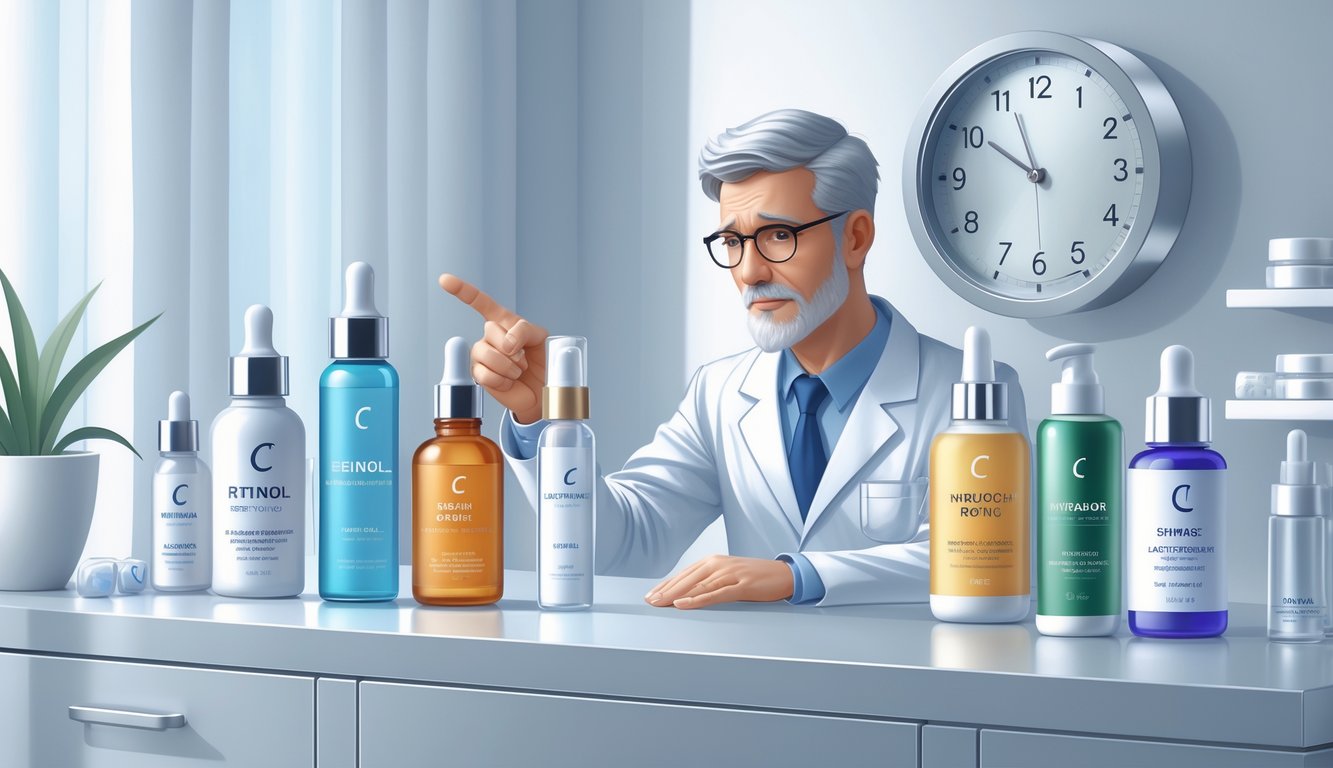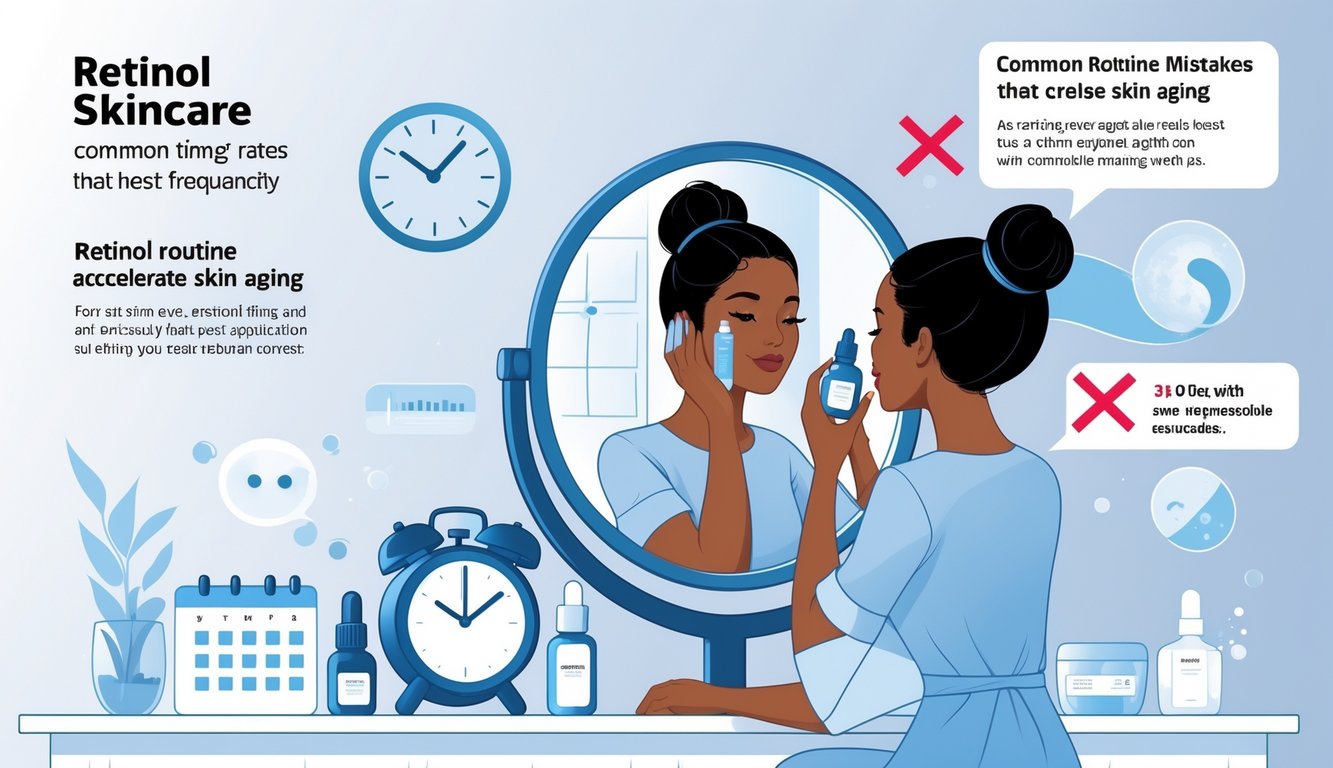Retinol Routine Mistakes Dermatologists Warn Are Quietly Aging Skin Faster
Avoiding Skin Irritation and Sensitivity

Some days my face feels like it’s about to flake off just from one drop of retinol. I didn’t sign up for both acne and crepey dryness in the same week. “Sensitive skin” on the label means nothing if you mess up the order or skip moisturizer. The tiniest change—layering wrong, forgetting a step—matters way more than the bottle claims.
Understanding Purging and Side Effects
I dove in, used way too much, and—yep, red splotches, breakouts, the works. Turns out, that’s “purging.” Not “bad skin,” just my pores freaking out. Dermatologists (Dr. Hadley King, Everygirl interview, I think?) say retinoids speed up cell turnover, so you get breakouts where you usually get them. Purging is not an allergic reaction, even if it looks terrifying.
It doesn’t last forever. Few weeks, says the American Academy of Dermatology. But if you get constant stinging or redness in weird spots, you’re probably doing something wrong. There’s no universal guide, but I stopped using benzoyl peroxide cleansers with retinol—combining harsh stuff is like lighting a match in a hay barn. Purging just feels worse than it is, usually.
Signs of Sensitivity: Redness, Dryness, Flaking
Every product says “non-irritating,” but my cheekbones beg to differ. Tight, flaky, red patches that makeup just highlights. Classic overuse: flaking on the nose and jaw, fine peeling, weird hot flushes after washing. JAMA Dermatology (2019) says 40% of new retinol users get these symptoms in the first two months. Not rare at all.
It’s weird to get redness when you’re expecting improvement. Skipped my barrier cream once and even my fanciest moisturizer couldn’t save me. Sometimes I skip a night, or use a hyaluronic acid serum for backup. Occasionally, my skin just decides it hates retinol and I have to switch to bland moisturizer for a week.
The Sandwich Method for Gentle Application
So, the “sandwich method.” I started after a dermatologist at a conference laughed at my peeling jaw. Moisturizer, retinol, then more moisturizer. It’s not magic, but it keeps my cheeks from looking sunburned halfway through the day. I like Vanicream for this—lightweight, no scent, and no drama.
Dr. Mona Gohara (Yale, Allure interview) says you won’t lose results, just irritation. Apply to dry skin (not damp, trust me, that’s pain) and you’ll avoid most disasters. Sometimes I forget the top moisturizer and regret it, but it’s better than any “advanced” hack I’ve tried. Miss the “top bread” and you’ll know it the next day. Not glamorous, but it works.
Pairing Retinol with Other Skincare Ingredients

Skincare order actually matters, even if I want to pretend it doesn’t. I’ve seen people slap on retinol like it’s just another lotion, no clue what’s under or over it. Some combos help, some just mess up your skin or cancel each other out.
Combining Retinol with Moisturizing Agents
Hyaluronic acid is the peacemaker, I swear. No matter which retinol I use, it just plays nice. Every dermatologist I ask says to layer them—Dr. Paik (U.S. Dermatology Partners) reminded me hyaluronic acid holds 1,000 times its weight in water, so you don’t wake up with your face stuck to the pillow.
Peptides and ceramides are like backup dancers, quietly fixing the mess retinol makes. I always tell people: sandwich method, every time. Moisturizer, retinol, moisturizer. Did it with a $5 niacinamide serum, too—really helped with redness. Antioxidants, bakuchiol, sure, but keep it simple or you’ll end up with a science experiment gone wrong.
Cautions: AHAs, BHAs, Vitamin C, and Benzoyl Peroxide
Mixing retinol with AHAs or BHAs? Might as well light your face on fire. Glycolic, salicylic acids—almost everyone I know gets irritated. Saw a TikTok where someone used vitamin C before retinol—immediate regret, couldn’t wear sunscreen for days.
Benzoyl peroxide? Dermatologists (Dr. Paik, Dr. Reid on CNN) say it just cancels out retinol, so why bother? Plus, it’ll dry you out so badly you’ll spend weeks trying to fix it. If you have to use actives like that, just alternate nights, or do what I do: take a total break once a week. Nobody follows perfect routines in real life and honestly, your skin likes imperfection better than overkill.
Frequency and Timing of Retinol Application

Here’s what really gets me—everyone asks about patience with retinol, but nobody ever talks about the weird stuff that messes up routines: misreading “every night” as “more is better,” ignoring the “pea-sized” part, assuming your skin will just get tougher if you keep pushing. Frequency, nighttime, slow ramp-up—skip any of that and it’s not just your skin that’s suffering. And honestly, sometimes I still mess it up.
How Often Should You Apply Retinol?
Okay, so, apparently everyone’s got an opinion on retinol frequency, and most of us are just winging it, right? I see people on Instagram globbing it on like it’s a magic eraser, but then there’s my dermatologist friend (who’s actually published in one of those journals I never read), and she’s always like, “Slow down. You’re not exfoliating grout.” I mean, is anyone actually starting slow, or do we all just ignore advice and panic after our faces peel off? Two nights a week is what the pros say. Sensitive skin? Maybe every third or fourth day, unless you’re into that “textured wall” look.
Here’s my messy attempt at a chart, because I can’t remember this stuff:
| Skin Type | Starter Frequency | Tolerance Target |
|---|---|---|
| Oily/Thick | 2–3x weekly | Nightly (if you don’t flake off) |
| Normal | 1–2x weekly | Every other night |
| Dry/Sensitive | 1x weekly (max) | Every 3rd night |
But, real talk, nobody tells you the first week is a disaster. You’ll overdo it, freak out, and then crawl back to whatever old-lady moisturizer you’ve got. It’s fine. Patience is the only thing that works, but who has any? If you’re expecting miracles in a week, you’ll be disappointed. Eight to twelve weeks, minimum. Sorry.
Best Time of Day for Use
Why are people still debating morning vs. night? I can’t count how many times I’ve heard, “But I’m in a rush in the evening!” Cool, but sunlight just nukes retinol. I know someone who puts it on before yoga at sunrise—nope. Sunlight destroys it. There’s a clinical review (Dermatologic Therapy, Dr. Marcheggiani, whatever) that literally says, “Use it at night.”
If you’re tempted to ignore the box and do whatever’s easy, don’t. I’ve tried it, and irritation gets wild. Apparently, if you wait 20 minutes after applying, it stings less (there’s a study, but I can’t remember the name). SPF in the morning won’t save you if you’re using retinol at dawn. Just use it at night and be boring about it.
Building Retinol Tolerance Gradually
So, you want baby skin, but you don’t want to flake? Sure, same. That’s not how it works. Retinol is like couch-to-marathon, except you’re running with your face. If you go hard, you’ll crash. I see so many “retinol horror stories” online—always the same: “Used it nightly, now I look like a lizard.”
Start with 0.25% or 0.5% (if you’re brave). Go slow. I tried a 1% serum every night in winter—horrible idea. My skin cracked, my friend laughed, I regretted everything. If you’re stinging constantly, you’re moving too fast. The American Academy of Dermatology says building up takes months. Months. Nobody wants to hear that, but it’s true.
Just be patient. Skip days. Use moisturizer. The “purge” is real and it’s ugly. I once mixed up my products and smelled like cinnamon rolls for a day—don’t ask.



